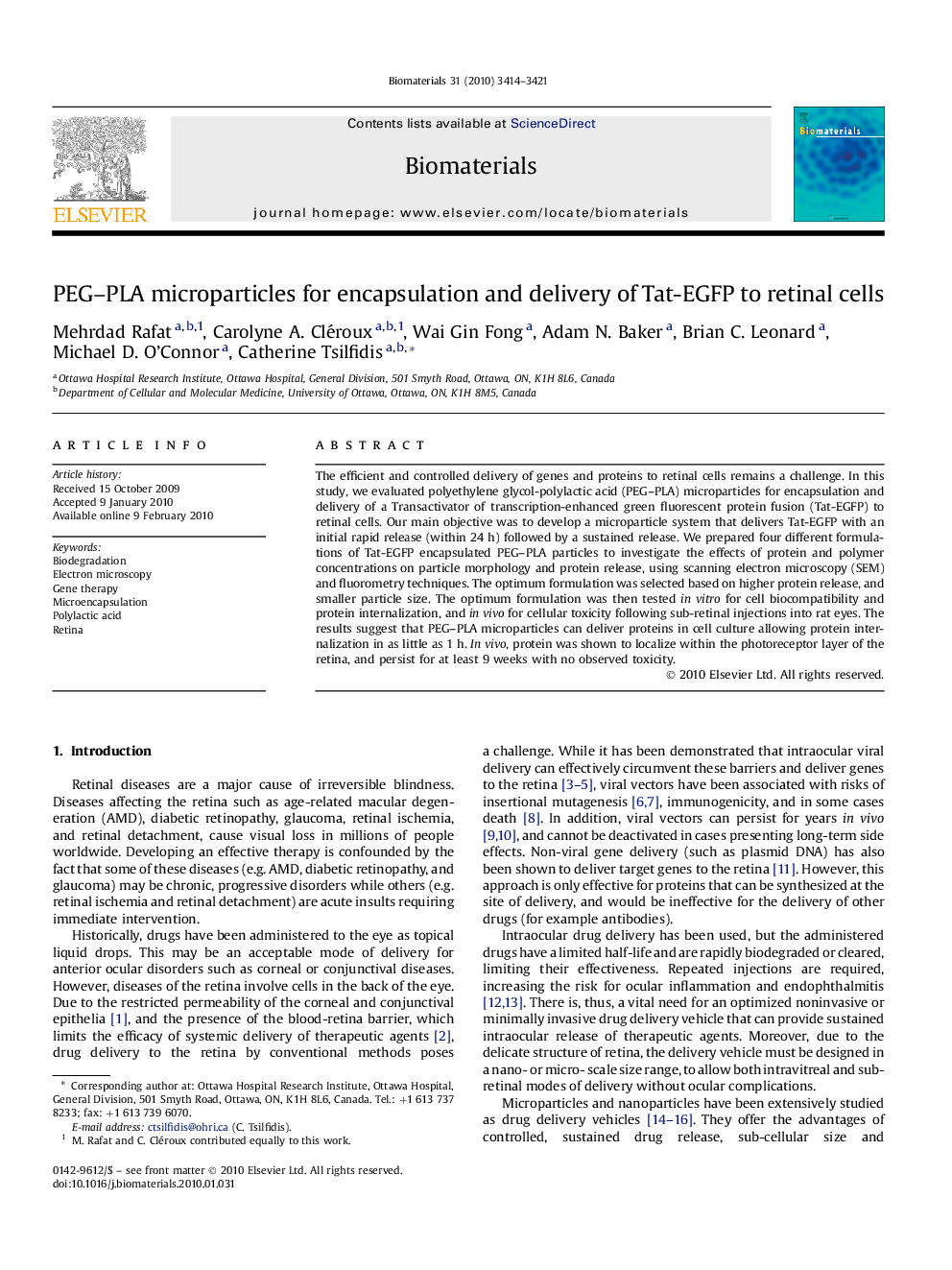| Article ID | Journal | Published Year | Pages | File Type |
|---|---|---|---|---|
| 8147 | Biomaterials | 2010 | 8 Pages |
The efficient and controlled delivery of genes and proteins to retinal cells remains a challenge. In this study, we evaluated polyethylene glycol-polylactic acid (PEG–PLA) microparticles for encapsulation and delivery of a Transactivator of transcription-enhanced green fluorescent protein fusion (Tat-EGFP) to retinal cells. Our main objective was to develop a microparticle system that delivers Tat-EGFP with an initial rapid release (within 24 h) followed by a sustained release. We prepared four different formulations of Tat-EGFP encapsulated PEG–PLA particles to investigate the effects of protein and polymer concentrations on particle morphology and protein release, using scanning electron microscopy (SEM) and fluorometry techniques. The optimum formulation was selected based on higher protein release, and smaller particle size. The optimum formulation was then tested in vitro for cell biocompatibility and protein internalization, and in vivo for cellular toxicity following sub-retinal injections into rat eyes. The results suggest that PEG–PLA microparticles can deliver proteins in cell culture allowing protein internalization in as little as 1 h. In vivo, protein was shown to localize within the photoreceptor layer of the retina, and persist for at least 9 weeks with no observed toxicity.
